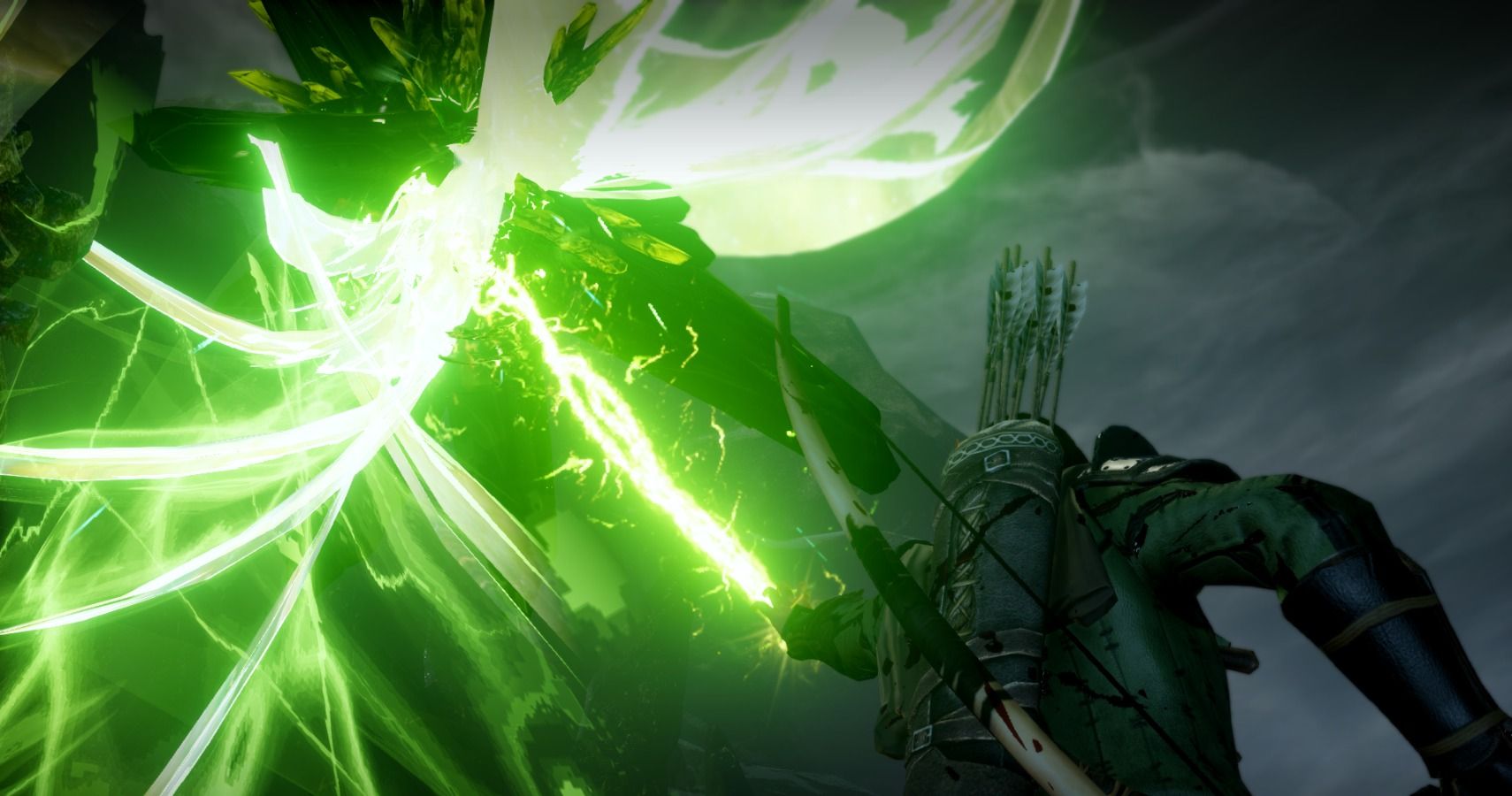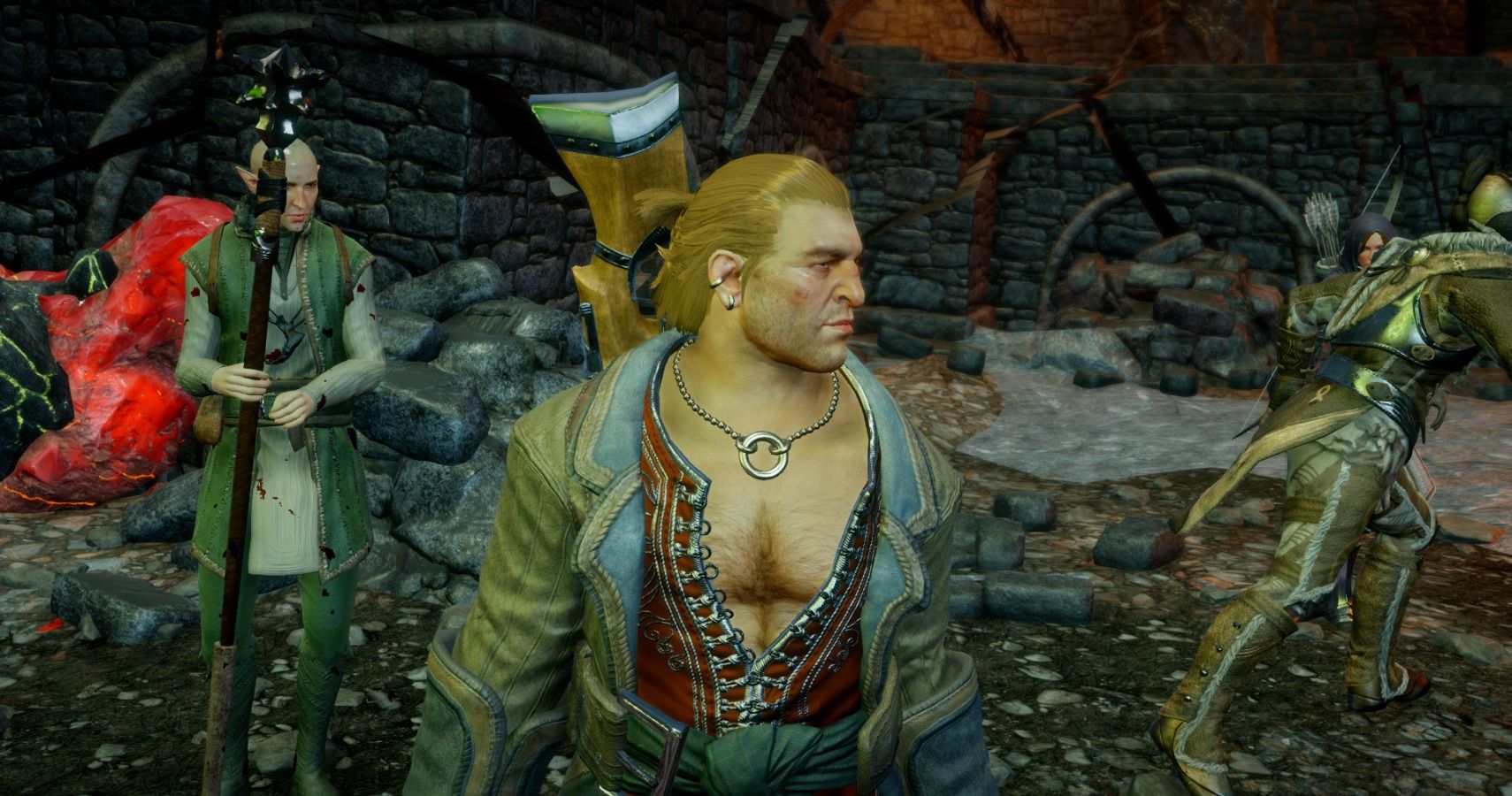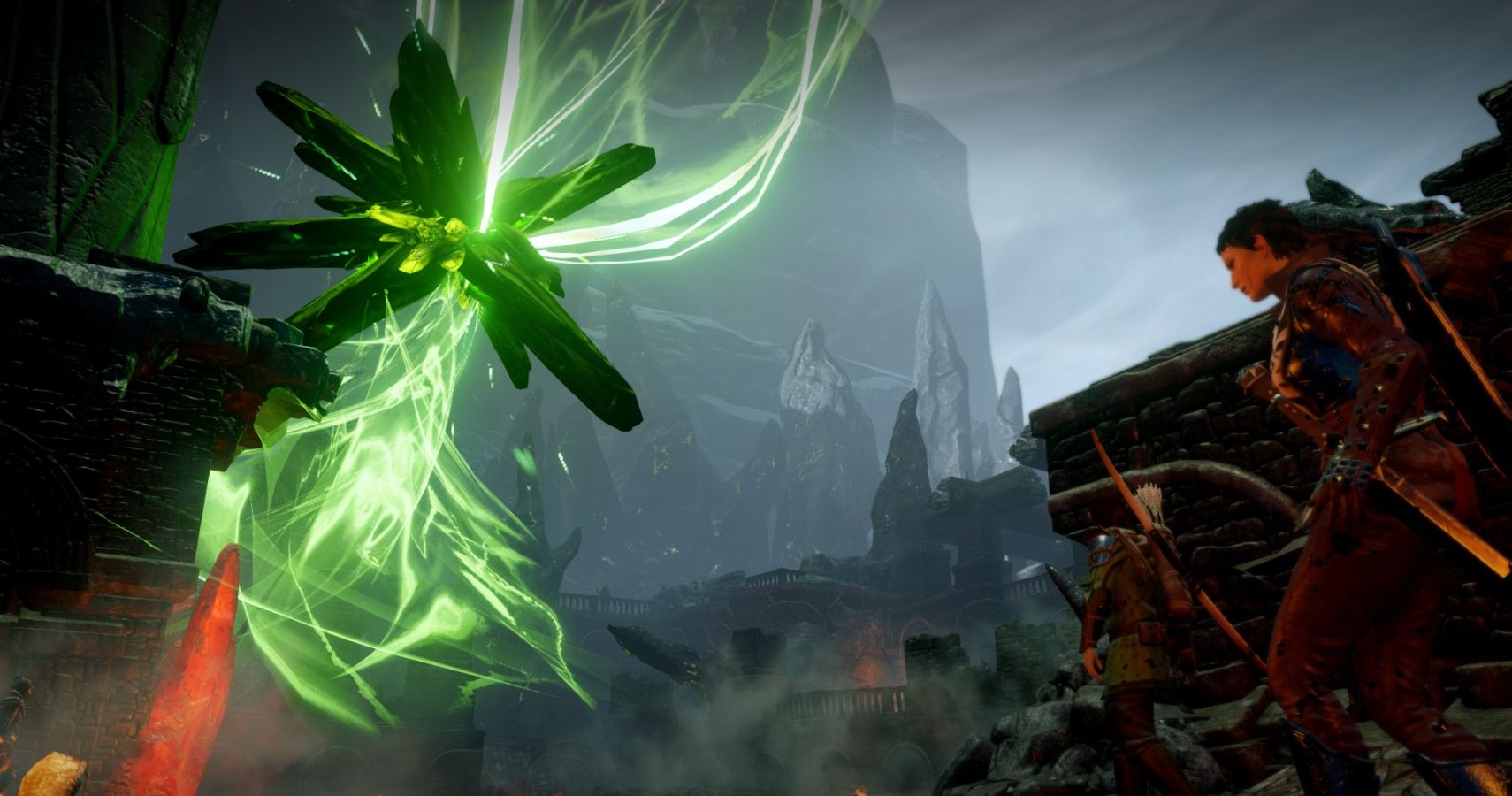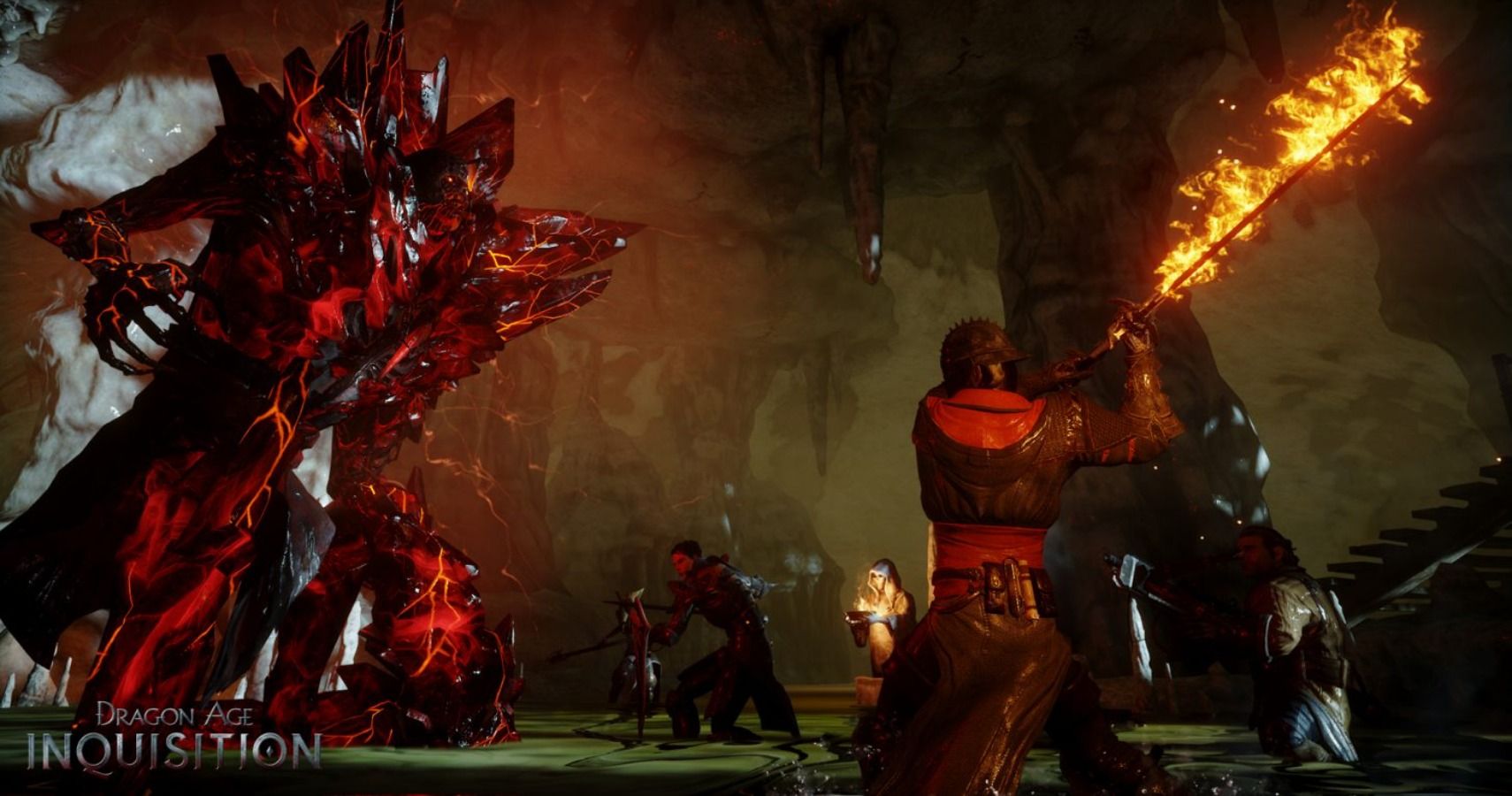We’re officially in Big Games Season and the video game Oscars are almost discernible on the horizon. Hades is phenomenal, Genshin Impact has taken the world by storm, and the new Pokemon DLC has enraptured players all over the world.
So, as one tends to do in a situation where there are far too many enticing new games to choose from, I recently decided to boot up a 100-hour RPG from 2014. Just for fun.
Dragon Age: Inquisition is a game I hold dear to my heart. I am aware of the critiques raised by old BioWare fans, and can concur with a lot of their arguments. At the same time, I reckon that Inquisition is a genuinely exceptional game. It has a remarkable cast of characters, a riveting main story, and a cause-and-effect branching narrative system that looms over you like a treacherous mountain. That last part is the best bit — I can’t remember how many times I’ve taken about 45 minutes to decide between saying yes or no because I am absolutely terrified of consequences. I’m not even talking about “choose wrong and you’ll trigger the apocalypse!” I mean “choose wrong and you might upset Cole a bit.”
Anyway, Inquisition is great. It’s just a shame that one of its best parts — tactical combat — is complete and utter poison for the first 20 hours or so.
Let’s break that thought down. Inquisition offers you the choice of adhering to one of three main combat styles: rogue, warrior, or mage. Rogue has two subcategories, dual daggers and bow, while warrior is split into two-handed weapons and sword-and-shield. There’s just one kind of mage at the start, which brings us up to five distinct classes. Your starting party consists of a mage (Solas), a sword-and-shield warrior (Cassandra), and a bow-using rogue (Varric). You’ve essentially got one tank, and two ranged characters that are a mix between DPS and support. The thing is, at least for the first 20 hours or so, none of this even matters all that much.
I’m not talking about game difficulty, by the way. I have finished Inquisition on Nightmare and I have played through the entire game on its easiest setting — that has very little with what I’m trying to argue here. What I’m discussing is the ostensible lack of class importance that Inquisition wears on its sleeve for its entire opening section, which is even further discounted by the complete absence of early-game enemy variety. This can be said about lots of RPGs! But at least in The Witcher you can shoot fireballs at a griffin’s face. In Skyrim you can shout at a giant before clattering it with a gargantuan greatsword. In Mass Effect you can turn your normal bullets into fire bullets, which is very basic but also very enjoyable to watch. In Inquisition you sort of just hold down the mouse button and deal 12 damage per arrow, watching the same animation of nook, draw, and loose at the enemy who kind of looks like a ghost with a paper bag over its head, over and over again.
Admittedly, I wouldn’t mind very much if Inquisition stayed like this — I play more for the story and characters anyway, and to be honest I just love Thedas as a world to immerse myself in. But I have spoken to so many people who have bounced off of what ultimately becomes an immensely impressive game because of how chronically boring its combat is. I wish it stayed boring so I didn’t have to say, “please play for a bit longer, I promise it gets good.” That sounds like someone saying, “sure, you’ve ran five kilometres today — if you do another 37 you’ll have done a marathon!” It sounds great, but you’ve got to go through such a slog to get there, and a lot of the time the end result might not even feel worth it. When I did a marathon I couldn’t walk properly for two days, so my immediate impression after finishing was more, “this is totally shit” than, “that was brilliant.”
But Inquisition is different than a high-intensity footrace. Its tactical combat system is remarkably versatile once you progress further into the game, because there comes a point where you unlock proper builds, as opposed to the caricatures your characters fall into earlier in the game. You can be a tempest archer, or a reaver, or a knight-enchanter. You can be a literal necromancer, if you want, although some of your party members are slightly unenthused by your newfound obsession with dead bodies. All of your companions can also specialize in certain denominations — Cole can change from an ordinary rogue into an assassin capable of dealing immense damage from behind enemy lines, whereas Blackwall can become a champion, meaning he’s essentially unkillable (even against dragons on Nightmare).
Once you get to this point all of your characters will have access to a wide variety of abilities, all of which are set to separate cooldowns. The system here is impressively complex — some abilities are qualitatively defined by proximity, others by the environment they’re used in. Some are predominantly used as support moves, while others are completely devoted to sheer DPS output. The fact you’ve got four characters, each of whom has their own arsenal of abilities and cooldowns, means that you’ve quadrupled the already immense amount of freedom as soon as you enter tactical combat.
Tactical combat, for those who don’t know, freezes the game in time. You can study where every enemy is, view which allies and opponents are currently locked in ability animations, and survey the area around you for potential advantages. When you move — you can literally move a footstep at a time with ten minutes between each one, if you like — your enemies move an equal distance. It’s kind of like Baldur’s Gate 3, expect you’ve got full control over the pacing. It’s not hardcore turn-based combat — it’s combat that unravels at the pace in which you engage with it, and when you’ve got over 30 abilities to choose from across four different characters on a battlefield surrounded by a frankly immense number of enemies, your engagement is often slow and clinical.
The plays you can pull off using the freeze-frames of Inquisition’s combat — especially against high-profile enemies like dragons and bosses — are phenomenal. Even basic abilities truly shine later in the game — Leaping Shot, which allows archers to backflip away from their opponent while shooting an arrow at them, can be used to pounce backwards, but it can also give you a vertical advantage by propelling you onto a higher surface behind you. At this safe distance, you can unleash the devastatingly powerful Thousand Cuts, any good tempest archer’s ace in the hole. You can freeze this at interims of your choosing, ensuring that every single aspect of the play unfolds in as precise a manner as possible, while also swapping to Varric to lay down traps for the enemy to fall back into, or preparing Dorian’s necromancy to raise the newly fallen for to fight for your cause. One second in combat can become ten minutes of play — it’s like a game of chess, except if every single piece moved at the same time and was capable of influencing opposing pieces on the other side of the board.
Inquisition is often criticized for a variety of issues, and most of these are reasonable. None of them are damning, though, and I firmly believe that, overall, it’s a genuinely excellent game. I have always maintained that the core reason people bounce off of it isn’t because the narrative starts off a bit shaky, or because the characters aren’t as good as they were in previous BioWare games. It’s because Inquisition takes one of its best aspects and buries it 20 hours into the game. Its build versatility and unique spin on microcosmic tactical combat are excellent — eventually. The jam in the middle is sweet, but it’s difficult to get past the stale, crusty exterior that keeps it locked away from people who don’t have time to commit to a bite. And that’s a completely fair reason to choose to invest your time elsewhere. That’s why I wish Inquisition’s combat didn’t take 20 hours to get good — if it showed off its strengths a bit earlier on, I’m sure the conversations we have about it six years later would be very different.




